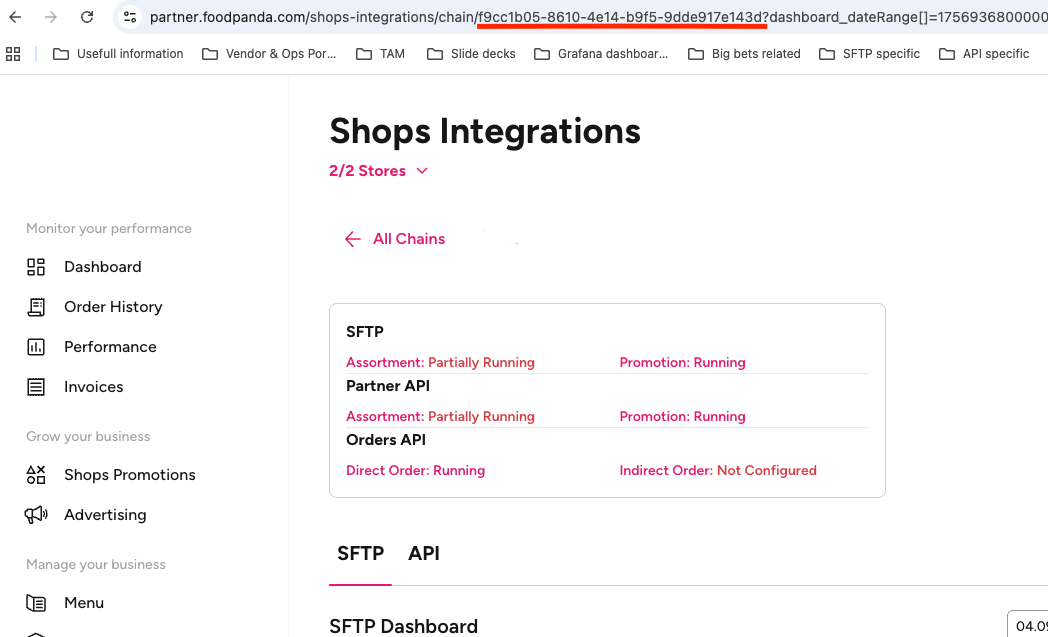API
Manage Incoming Orders
Manage your Catalog of products
SFTP
Manage your Catalog of products
Manage your Promotions
How to Integrate#
This section covers the basics of how to integrate. Click these links below to access each section of the integration process as required, or simply scroll down the page:
Integration prerequisites#
To be eligible for this integration, you must have the following:
API Development Capability – The ability to develop an API in-house or access third-party support for API development
To integrate with our Partner API, you also must be one of our partners and ensure that you have:
Access to Partner Portal (our self-service portal for partners)
Click here for more information on what’s Partner Portal
Access to the Integrations Plugin in Partner Portal
Click here for more information on how to access the Shops Integrations Plugin
One or more existing product(s) on Catalog in order to send the updates
What is required to complete the Integration?#
Integrate with PUT, GET and POST endpoints
In order to start using the endpoints, you will require to have a chainID, that you will use in the request URL. You can request your chain ID from your Account Manager or find it directly in your Shops Integrations plugin in the URL. For example:

PUT to update the product information such as status, price, quantity
POST to create a request to export the whole assortment of the vendor
GET: we have 3 different GET endpoint
To download bulk product update job logs (results come from the PUT request)
To review the assortment categories
To retrieve listed products.
2. Set Up a Webhook to receive the product data
To receive the updated product information on an item level
To export an entire assortment at a store level
Securing your webhook is mandatory!Please check FAQs
Token Management & Access#
What is a token & how do I use it?#
A Bearer API token is a way to prove who you are when making API requests. It’s part of the OAuth 2.0 standard and is included in the request headers to show that you’re allowed to access certain data or services.
How It Works#
Request the Client ID and Secret – please contact your Manager to get this information.
Create Token - By sending the API request including Client ID and Secret, you will receive an API token that is valid for 2 hours.
Use the Token – Every time you make an API request, you include the token in the header
Why It’s Useful#
No need for usernames and passwords in every request
The server doesn’t have to remember who you are (it just checks the token)
Steps for Authentication & API Access#
Generate an API Token
Step 1: Request
client_idandclient_secretfrom your Account ManagerStep 2: Make a request to generate access token endpoint to retrieve your
access_tokento the following endpoint
https://foodpanda.partner.deliveryhero.io/v2/oauth/token
Step 3: Include your
access_tokenin theAuthorizationheader of every request you make to the Partner API. Prefix youraccess_tokenwith the stringBearerfollowed by a space. For example:
Authorization: Bearer <access_token>
Important things to remember about API tokens#
Make sure to store your client_id and client_secret is a safe place, this is what you will need each time you request a token
You can ask your Account Manager to create up to 10 client_id in your chain
When you create a token, they expire in 2 hours.
Generated token is valid for all stores under your chain
In order to access Partner Portal or Shops Integrations, please reach out to your account manager
Where can I find the production API endpoints?#
Further information is detailed in the partner API documentation here.